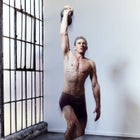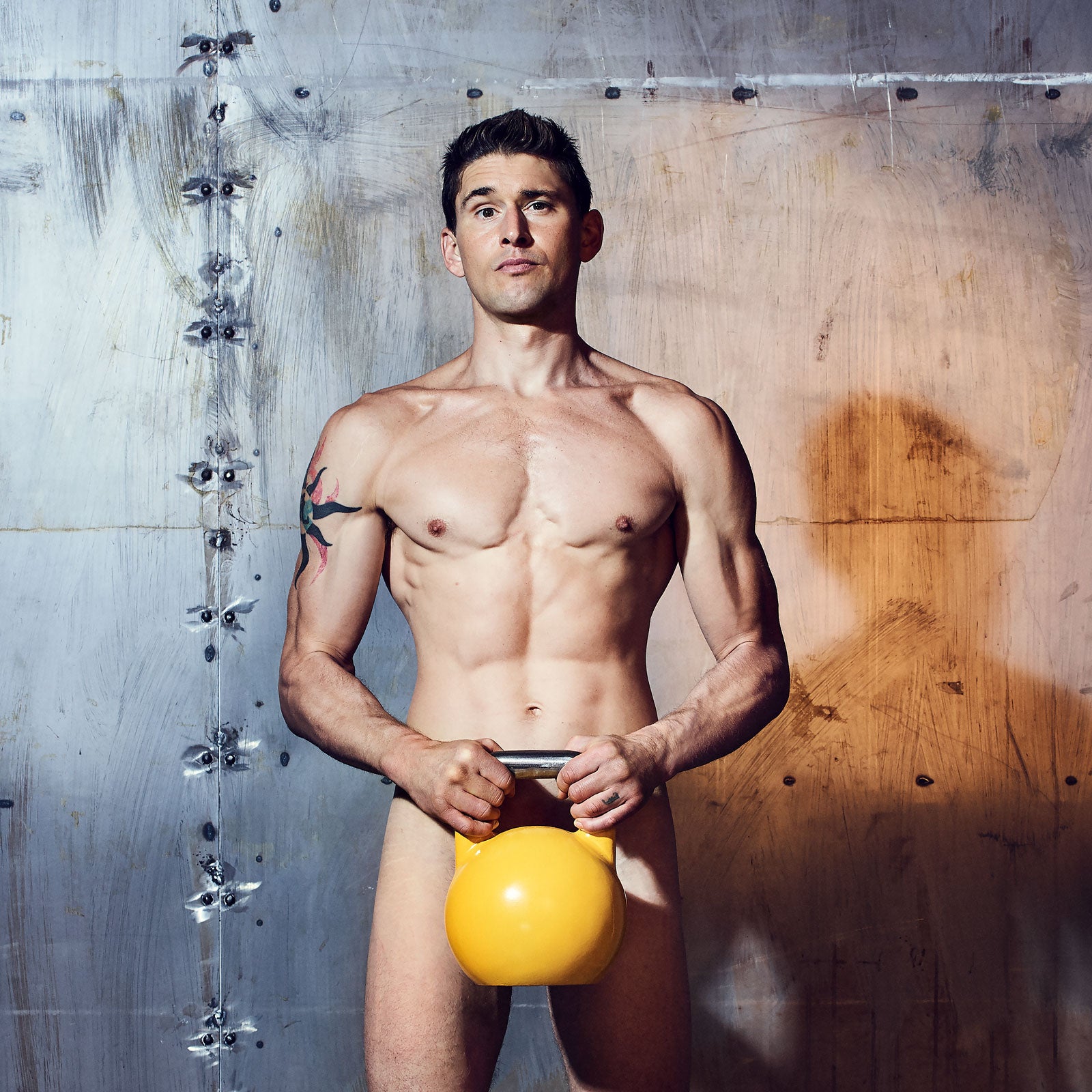If there’s a new technology or diet out there promising to improve your life, chances are has tried it. Over the past few years, the 36-year-old Spokane-based author, blogger, personal trainer, and father of twin boys has grabbed the life-hacking baton from Tim Ferriss, the godfather of self-quantification, and run with it, occasionally sprinting down some questionable trails. Greenfield made headlines last year after having his penis injected with stems cells, part of a quest to explore the outer edges of sexual-performance enhancement. (“My wife was pretty concerned about it,” he says, “but then I was like a 16-year-old boy for the next few months.”) Most of his work, however, is grounded in more traditional areas of health and fitness, and his commitment to combining the latest research-backed findings with human-guinea-pig experimentation means he’s often adopting effective wellness strategies—cold plunges, blood testing, intermittent fasting—long before they hit the mainstream. We phoned Greenfield, who was on his daily afternoon walk, to glean some of his hard-earned wisdom.
On Becoming Ben Greenfield
“I wasn’t a jock when I was growing up. I really didn’t rip my nose out of the books until my parents built a tennis court behind our house. That got me interested in sports. I kind of had a crush on my tennis instructor.”
The New Rules of Healthy Living
 From virtual-reality meditation to infrared saunas, these are the latest innovations and insights for improving your well-being
From virtual-reality meditation to infrared saunas, these are the latest innovations and insights for improving your well-being“I wanted to be a sports-medicine doc or an orthopedic surgeon. But after getting a master’s in exercise physiology and biomechanics, I got a job in surgical sales. There wasn’t a single doctor who encouraged me to go to medical school. It just seemed like reams of paperwork. I’d worked as a personal trainer all through college, so eventually I quit sales and dove back into that.”
“I can tell you exactly why I was a good trainer: I was a geek. I wasn’t into biceps curls and pressing. I was into blood-lactate testing and metabolic-rate testing.”
On Healthy Living
“Do some stool analysis. Some blood tests. What’s your blood vitamin D level? What are your electrolyte levels? Once all that data is on hand, you can customize your diet according to what your body needs rather than accepting some dogmatic diet that’s selling well on airport bookshelves.”
“There’s a ton of data linking fluctuations in blood glucose with a host of chronic diseases. When you chew your food 25 to 40 times per bite, it lowers your blood-glucose response to a meal.”
“If you can keep inflammation and blood glucose low, you’re nailing the two variables that cause a lot of athletes to be healthy on the outside but unhealthy on the inside. I wear a continuous blood-glucose monitor. I have a needle that goes into my arm. I think that’s going to be the next big thing in the self-quantification movement.”
“I’m big into the use of cold therapy—the whole Wim Hof method. I used to do long, cold swim sessions in the Spokane River when I trained for Ironmans. I remember I finished up those sessions sitting in my car trying to figure out how to drive home. But that was more just being stupid about my cold-water swimming than any sort of crazy biohack.”
“If you can control your breathing, you can control your sympathetic nervous system. And the cool thing is that the locus of control is inside you. You’re not relying on a supplement or pharmaceutical or biohack.”
“There’s a host of benefits from intermittent fasting. Decreased inflammation. Better sleep. I adopt that as a dietary principal. So if I finish dinner at 8 p.m., the very soonest I eat is 8 a.m. Many athletes confuse intermittent fasting with caloric restriction. I eat about 3,500 to 4,000 calories per day, just compressed into a smaller window.”
“People use biohacks as a substitute for hard work. They think, Well, I have this special infrared light in my office that’s going to enhance my testosterone production, so I don’t have to go to the pain cave for this afternoon’s workout. But you still have to break a sweat and meditate and engage in all the things that we know are good for us. Once you’ve got all that down, then you can throw technology into the mix.”
On Hacking Your Environment
“I’ve got two kettlebells on the floor of my office so every 30 minutes I can do kettlebell swings. I’ve got a pull-up bar on the door. I’ve got a treadmill. I’m walking while I’m talking to you right now. If you hack your environment, you can stay active all day.”
“We live off-grid. We grow all our own food and I hunt most of our meat. We’re basically like hippies. But then you walk inside my house and there’s nearly half a million dollars’ worth of different biohacking equipment, from pulsed electromagnetic field machines to hypoxic training devices.”
“If your room is not at an ideal temperature—typically 64 to 66 degrees—you’re not engaging in proper repair and recovery while you sleep. I sleep on a ChiliPad, which circulates cold water underneath my body.
“I keep the room at 66 degrees. I’ve got blackout curtains. I listen to binaural beats played through headphones to lull me into a deep-sleep state. I even diffuse lavender oil next to my bedside. But my wife is the complete opposite. She just lays her head on the pillow and goes to bed.”
On Being a Lab Rat
“I’ve engaged in some pretty extreme acts. To a certain extent, it’s my shtick. There are risks, but I love figuring out ways that you can make your body feel young, espeÂcially when they’re within the bounds of relative safety and legality.”
“I spend the first hour of each day just looking at science publications. I keep my ear to the ground to understand if there’s actual research behind these devices or they’re just gimmicks.”
“Heart-rate variability is a good way of determining that your nervous system has recovered. I use to track HRV, but you can use any of these new apps.”
“I’ve taken a deep dive into anti-aging. A couple of months ago, I became one of the first people in the world to get a full-body stem-cell makeover. My entire musculoskeletal system was injected with stem cells combined with platelet-rich plasma, which is basically like a growth factor. I woke up after five hours, covered in needle marks and knife wounds. But now my joints feel like they did when I was a teenager.”
And One More Thing
“Accepting who you are, with all your inherent flaws and imperfections, can be dangerous. Sometimes you set expectations for yourself that are too low.”


